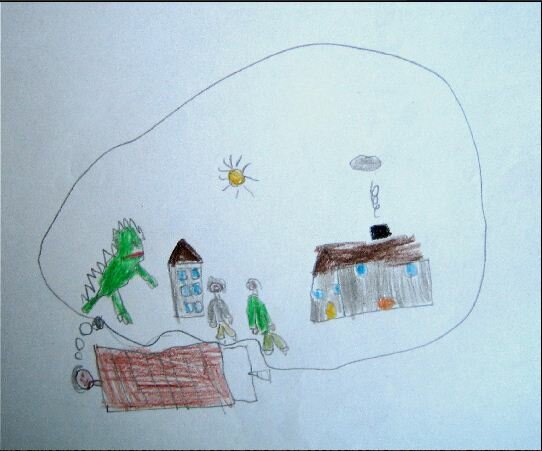Dream Bizarreness and the Controversy between the Neurobiological Approach and the Disguise-Censorship Model: The Contribution of Children’s Dreams
Claudio Colace
Neuropsychoanalysis, 2012, 14 (2)
Abstract
One current aspect of the debate on dream bizarreness is the controversy between the neurobiological approach and the Freudian disguise-censorship model. The neurobiological approach to dreaming—represented first and foremost by the “activation-synthesis” hypothesis, but which also includes other well-known theories—ascribes dream bizarreness to the unique neurobiological conditions of the brain during the REM phase of sleep (i.e., random ponto-geniculo-occipital activation and aminergic demodulation of the brain, deactivation of the dorsolateral prefrontal cortex, etc.) and rejects the Freudian explanation of dream bizarreness as motivationally based. Furthermore, the disguise-censorship model is accused of being needless, misleading, and not empirically testable. This article describes how studies on young children’s dreams have cast light on some aspects of the nature of dream bizarreness and of the disguise-censorship controversy.
© Karnac Books Ltd.
Read Full Article
Additional Information
The contribution of the studies on children’s dreams may be summarized as follows: 1. Studies on children’s dreams show that the disguise-censorship model is empirically testable. 2. The results of the studies on children’s dreams are consistent with the hypotheses derived from the disguise-censorship model. 3. Many basic statements and implications of the neurobiological approach to dream bizarreness do not fit with the data on children’s dreams. 4. The study of the relationship between the superego and dream bizarreness in children might contribute to the research on the neuroanatomical correlates of the disguise-censorship model. At present, while the empirical data available on children’s dreams are consistent with the disguise-censorship model, they do not seem to fit with many basic statements/implications of some representative neurobiological theories on dream bizarreness. Children’s dreams suggest that the underlying neurobiological substratum of dreams does not, in itself, guarantee the presence of bizarreness. Dream bizarreness should be considered as a variable—rather than a default—aspect of dreams. In light of the correlations found in children between dream bizarreness and superego development, it seems that dream bizarreness should be considered, at least in part, as motivationally based—that is, as the result of a motivational conflict between two tendencies (i.e., moral consciousness and forbidden wishes). Now, the disguise-censorship model is the only one that explains this correlation.
About the Author
 Claudio Colace is executive Psychologist at the Operational Unit of Psychology of the National Health Service in Italy – AUSL Viterbo, where he works in the Outpatient Psychology Department and in the Centre for Drug Addictions, at Civita Castellana. He obtained a MD in Psychology at the University of Rome “La Sapienza” and a PhD in Psychology at the University of Bologna, Italy. After training in sleep research at the Sleep Laboratory of the University of Rome “La Sapienza”, he carried out empirical studies on children’s dreams, dream bizarreness, and on dreaming in states of addiction. He has been a member of the Italian Society of Sleep Research from 1997 to 2009 and is currently a member of the International Neuropsychoanalysis Society. He is the author of scientific contributions published in The American Journal on Addictions, Neuropsychoanalysis, Alcohol and Drug Review, Sleep and Hypnosis, Sleep, and Sleep Research. He has recently published Children’s dreams. From Freud’s observations to modern dream research (Karnac Books).
Claudio Colace is executive Psychologist at the Operational Unit of Psychology of the National Health Service in Italy – AUSL Viterbo, where he works in the Outpatient Psychology Department and in the Centre for Drug Addictions, at Civita Castellana. He obtained a MD in Psychology at the University of Rome “La Sapienza” and a PhD in Psychology at the University of Bologna, Italy. After training in sleep research at the Sleep Laboratory of the University of Rome “La Sapienza”, he carried out empirical studies on children’s dreams, dream bizarreness, and on dreaming in states of addiction. He has been a member of the Italian Society of Sleep Research from 1997 to 2009 and is currently a member of the International Neuropsychoanalysis Society. He is the author of scientific contributions published in The American Journal on Addictions, Neuropsychoanalysis, Alcohol and Drug Review, Sleep and Hypnosis, Sleep, and Sleep Research. He has recently published Children’s dreams. From Freud’s observations to modern dream research (Karnac Books).







